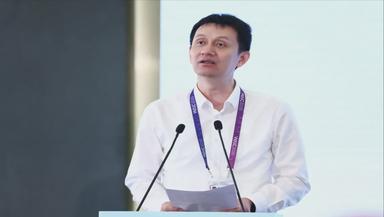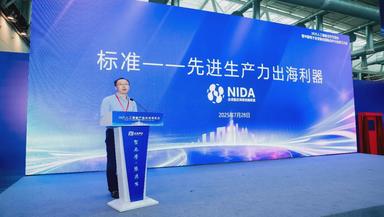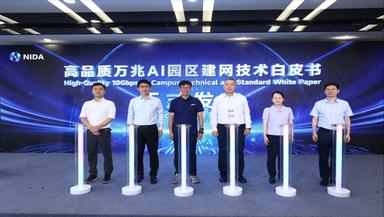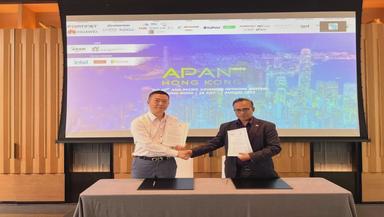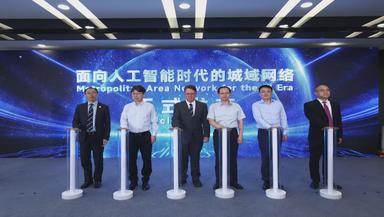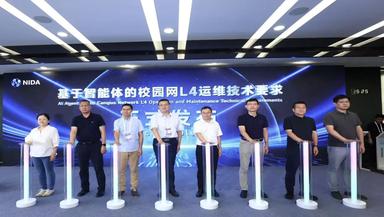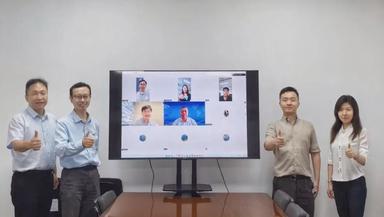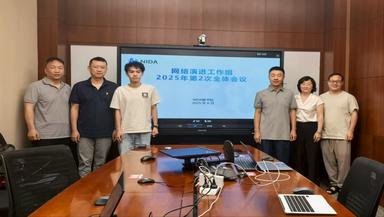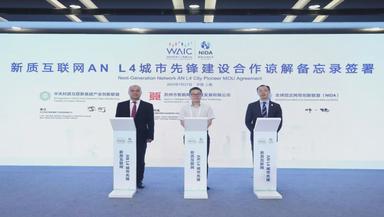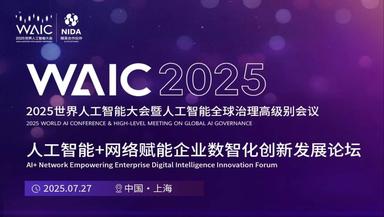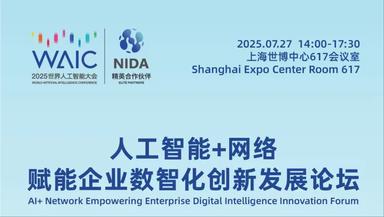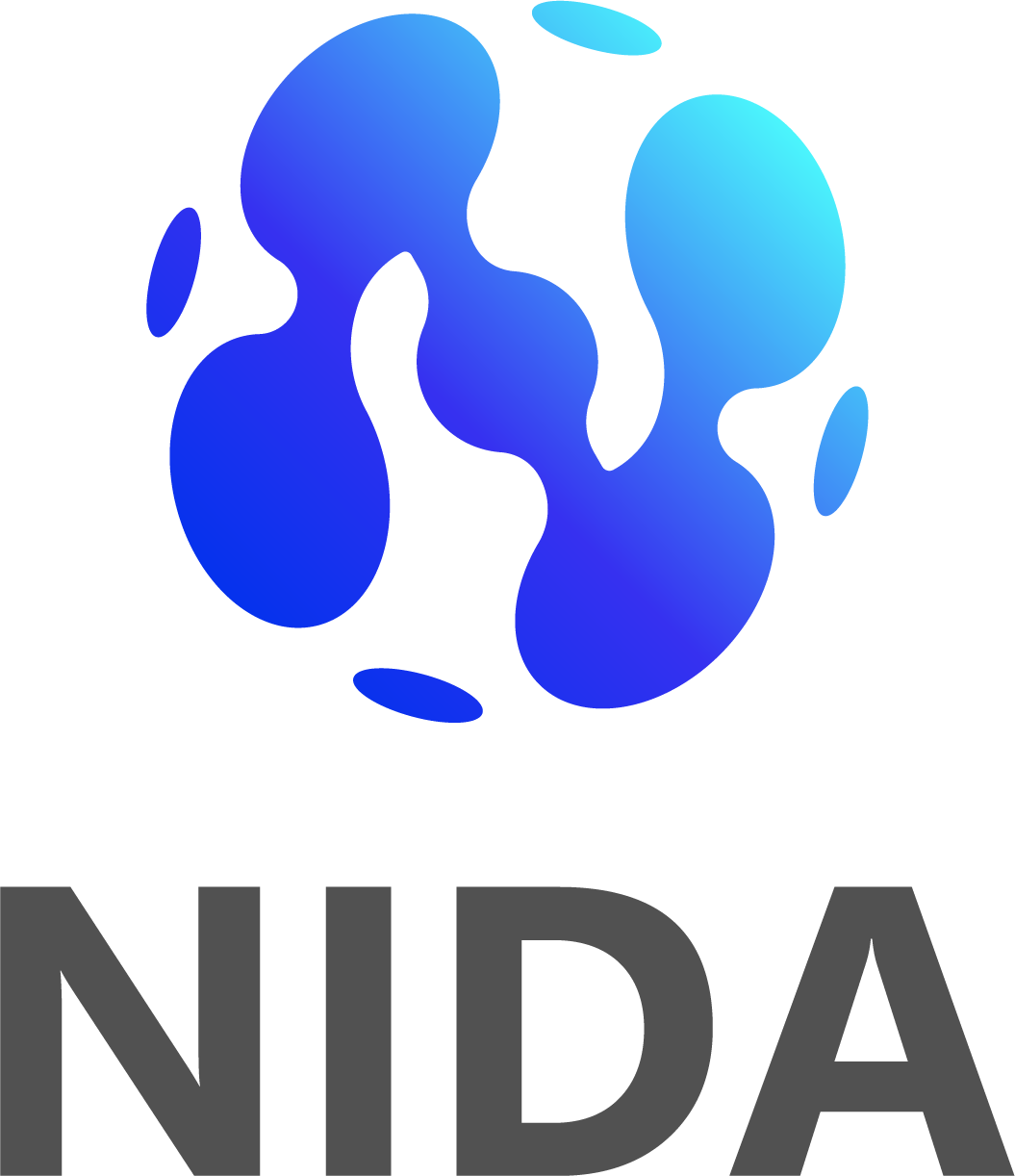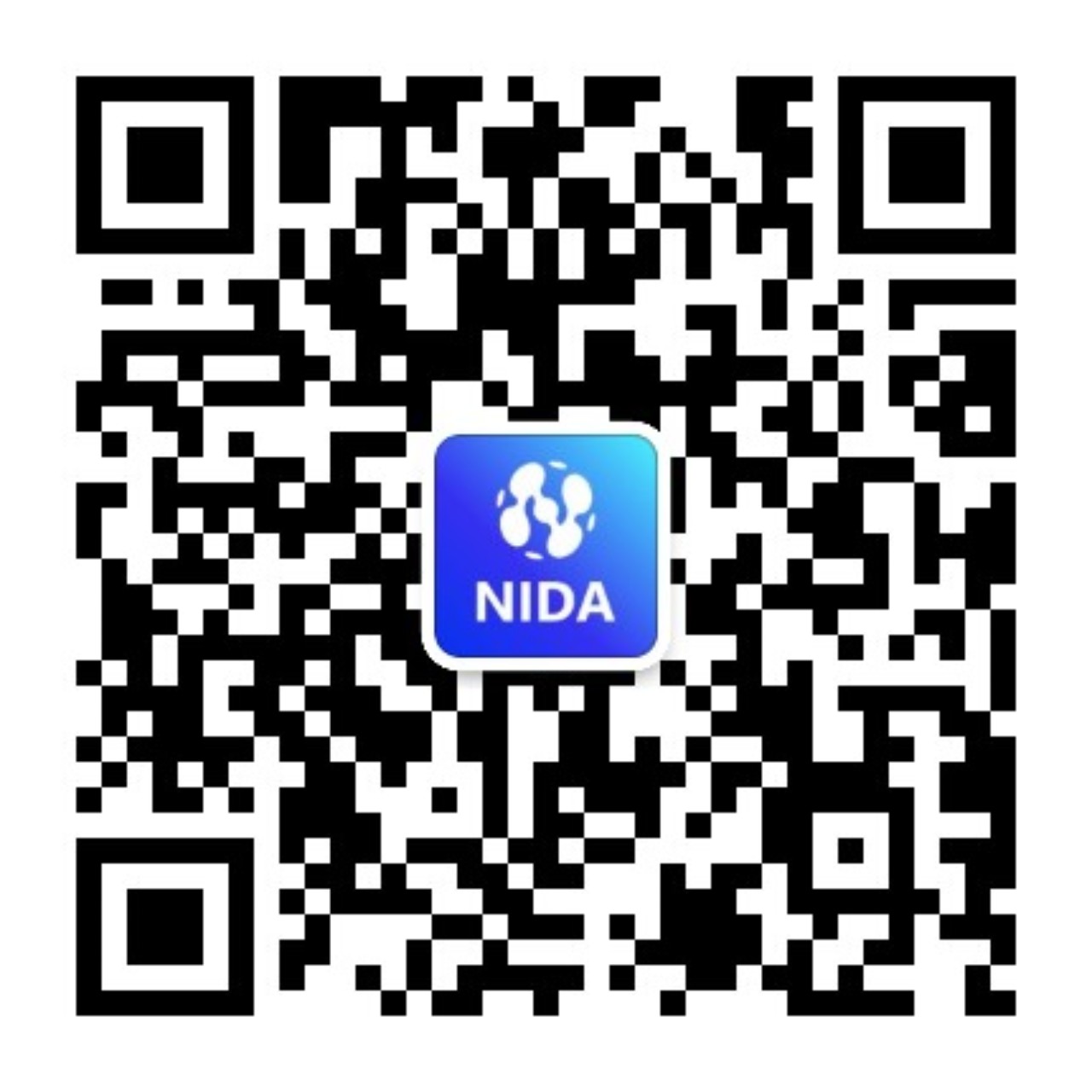Embracing AI,Unlock New Future of Enterprise Autonomous Networks
[China, Shanghai, July 27, 2025] During the 2025 World Artificial Intelligence Conference, the AI+ Network Enterprise Digital Intelligence Innovation Development Forum, hosted by the Network Innovation and Development Alliance (NIDA), was successfully held in Shanghai. Experts and scholars from organizations including the Internet Society (ISOC), China Communications Standards Association (CCSA), the Internet Engineering Task Force (IETF), and the China Academy of Information and Communications Technology (CAICT), along with representatives from innovative enterprises, gathered to focus on key issues such as how to apply Agentic AI technology to enterprise ICT infrastructure and how to inject new momentum into enterprise digital intelligence upgrades through AI technological innovation. Participants shared cutting-edge technologies and application practices, engaging in multi-dimensional exchanges to help industries achieve leapfrog development through AI.At present, artificial intelligence technologies represented by large models and intelligent agents are profoundly reshaping production and life. Ao Li, the Chief Engineer of CAICT, said: "The core of AI-network integration is building an integrated 'Cloud, Network, Intelligence, Computing' service system. This is not only an inevitable trend in technological innovation but will also reshape innovation paradigms and development models across industries, becoming the core engine driving industrial transformation."Deng Yiou, Secretary-General of NIDA, mentioned that autonomous network is the cornerstone of next-generation networks. Through the mutual empowerment of AI and networks, the gap between underlying network infrastructure and upper-level business applications can be bridged, promoting the upgrade of enterprise digitalization to intelligent unified platforms. Ted Hardie, Member of NIDA Strategic Advisory Committee and Chairman of ISOC , provided profound insights on evaluating the value of AI in network evolution. By drawing parallels between radium and railways—two transformative technologies with fundamentally different outcomes—he identified the key to leveraging AI for creating an "Industrial Revolution"-scale transformation in networking: "Interoperability fosters innovation, serving as the critical requirement for turning technological marvels into industrial revolutions."Nan Xinsheng, Deputy Secretary-General of CCSA, stated in his keynote address that autonomous networks represent the inevitable convergence of artificial intelligence and network lifecycle management. The deep integration of AI Agent technology—epitomized by network agents—has empowered autonomous networks to achieve L4-level advancements in high-value scenarios. In telecommunications operators' practical implementations, this integration has significantly enhanced operational efficiency and service quality.Nan emphasized: "By defining the vision and architecture of autonomous networks, establishing tiered construction requirements and standards for high-value scenarios, and implementing phased rollouts focused on tangible outcomes—while simultaneously enabling industry-wide collaboration in capability assessments and innovative practices—we collectively propel the flourishing development of the autonomous network industry. These proven methodologies offer invaluable guidance for enterprise autonomous network deployment."Wu Qin, Huawei Data Communication Network Architect and IETF IAB Member, stated in his keynote address "Network AI Agent Architecture Standard Evolution": "The three core intelligent agents—Fault Agent, Change Agent, and Optimization Agent—collectively form intelligent network operations, accelerating the iterative evolution of autonomous networks toward L4-level capabilities."The continuous advancement of AI technology is driving all industries toward comprehensive intelligence, with industry organizations, enterprises, and stakeholders actively committed to creating value through AI applications. At this forum, multiple achievements were released including industry blueprint white papers and technical standards. The publication "Metropolitan Area Network for the AI Era" significantly enhances enterprise AI training efficiency through intelligent traffic identification, elastic traffic scheduling, and RDMA lossless technology.The white paper "Agentic Enterprise ICT-Infrastructure O&M Blueprint" analyzes the evolutionary trajectory of enterprise operations toward digital and intelligent transformation. It introduces AEI (Agentic Enterprise ICT-Infrastructure), defining its conceptual framework, strategic vision, and core characteristics for agentic operations management of next-generation ICT infrastructure. Furthermore, it presents two high-value implementation scenarios with reference architectures:Enterprise Data Center Operations and Smart Campus Operations delineated according to AEI's evolutionary phases and critical enabling technologies.The "High-Quality 10G AI Campus Network Construction Technical White Paper" proposes a three-layer architecture for AI campus networks, encompassing six dimensions for network quality assessment, from A to F. It also provides recommended network architectures and metrics based on industry and scenarios.NIDA collaborates with Industry-Academia-Research-Application Partners to release "AI Agent-based Campus Network L4 Operation and Maintenance Technical Requirements", establishing an AI Agent and Network Digital Twin converged architecture for campus networks, advancing AI-driven network operations toward high-level autonomy.During the presentation session, Carsten Rossenhoevel, Co-founder and CTO of the European Advanced Networking Test Center (EANTC), shared practical insights on Level 4 autonomous network grading assessments. He stated: "EANTC has collaborated with industry partners to standardize the foundation capability grading framework for autonomous networks, driving networks toward higher-level autonomy to deliver more efficient and stable connectivity experiences for users."Shi Dewei, Deputy Director of the Information Center at ShanghaiTech University, shared how the university collaborated with Huawei to deploy Network Digital Map and Network AI Agent solutions. This initiative facilitates campus automation and intelligent upgrades, enhancing user experience on the campus network while addressing challenges arising from the transition from traditional teaching to AI-assisted interactive instruction. The deployment advances the network's evolution from Level 3 to Level 4 autonomous capabilities.Jiang Yuqi, Director of the Network Business Unit at CPIC Group's Cloud Service Division, shared how Pacific Insurance collaborated with Huawei to develop an industry-leading "Digital workforce" leveraging AI large model technology. This innovation breaks through human efficiency and capability limitations, enabling a more rational cost structure and superior customer experience.Yang Lan, Network Specialist at Lijiang People's Hospital, presented AI applications including: AI-assisted clinical diagnosis, Pathology data analysis with AI support, AI-powered patient triage. She also outlined future hospital network upgrades covering bandwidth, wireless, security, and O&M domains, along with concepts for remote pathology diagnosis. The hospital contributed to the *High-Quality 10Gbps AI Campus Networking Technology White Paper* and will reference it for future network transformation.In the intelligent era, how to achieve two-way integration of AI and networks has become an important topic of industry concern. In the pannel discussion session, NIDA, together with the China Academy of Information and Communications Technology, Huawei, and enterprise representatives, discussed and shared their practical experience and insights on AI and networks, providing direction and practical reference for AI technology to help industry digital intelligence.At the forum, NIDA and the China Academy of Information and Communications Technology (CAICT), alongside industry pioneers such as Huawei, jointly launched the "AI Agents Accelerating AN L4: Enterprise Digital-Intelligent Innovation Pioneer Initiative". This initiative calls upon all industries to advance comprehensive intelligence across sectors through continuously evolving autonomous networks.Suzhou Intelligent Connected Technology Development Co., Ltd. (a subsidiary of Suzhou Industrial Park XinJianyuan Group), the Global Fixed Network Innovation and Development Alliance (NIDA), and the Zhongguancun Super-interconnected New Infrastructure Industry Innovation Alliance have jointly signed Next-Generation Network AN L4 City Pioneer MOU Agreement.Based on the principles of equality, voluntariness, complementary advantages, and mutual benefit, the three parties will establish a long-term, stable, and close strategic partnership. Together, they aim to:· Build an industrial cooperation platform for Next-Generation Network innovation and development;· Actively explore innovations in Next-Generation Network technologies and standards, focusing on user scenarios;· Vigorously promote the implementation of industry alliance standards in the Suzhou Industrial Park, creating a world-leading and model-innovative exemplary plan for the Next-Generation Network Pioneer City Construction Action Plan.This forum not only summarized the research, innovative applications, and development achievements of AI agent technology but also represented the industry's profound reflection on how autonomous networks will drive future development directions, injecting new momentum into the development of AI and autonomous networks.
